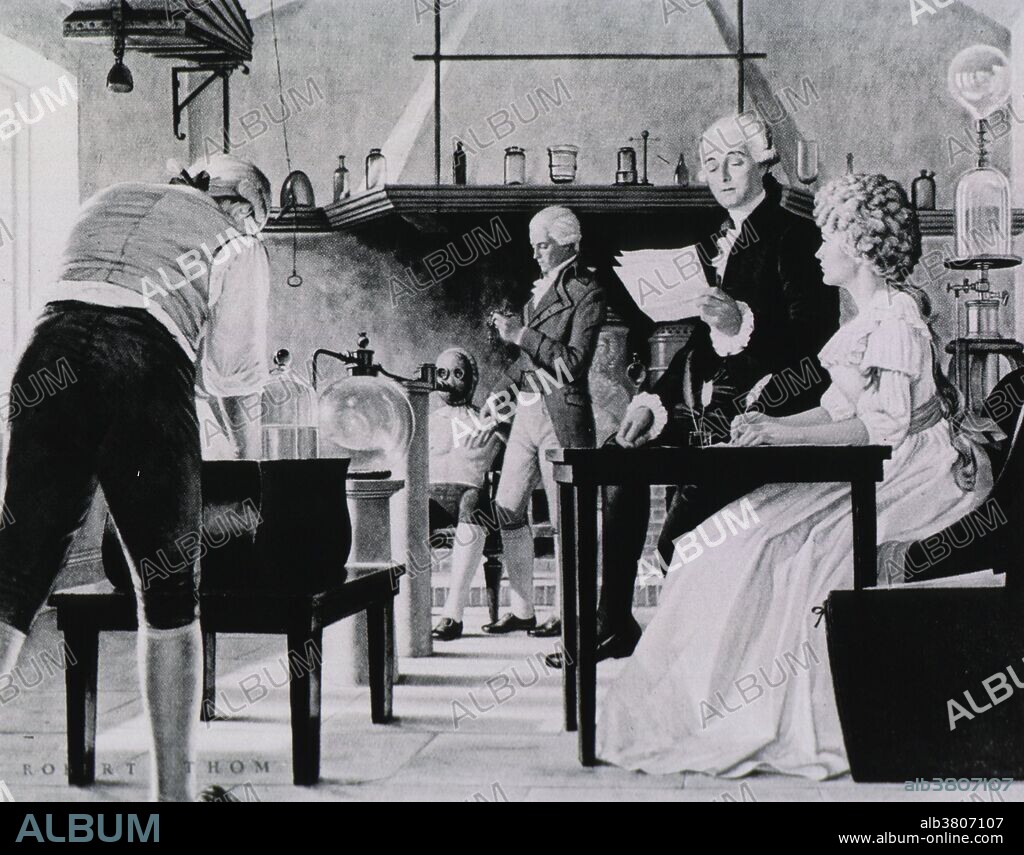alb3807107
Lavoisier Chemistry Laboratory

|
Añadir a otro lightbox |
|
Añadir a otro lightbox |



¿Ya tienes cuenta? Iniciar sesión
¿No tienes cuenta? Regístrate
Compra esta imagen

Título:
Lavoisier Chemistry Laboratory
Descripción:
Traducción automática: Antoine-Laurent Lavoisier (26 de agosto de 1743 - 8 de mayo de 1794) fue un químico francés considerado el fundador de la química moderna. Cambió la ciencia de una cualitativa a una cuantitativa. Es conocido por su descubrimiento del papel que desempeña el oxígeno en la combustión. Reconoció y nombró al oxígeno (1778) y al hidrógeno (1783) y se opuso a la teoría del flogisto. Lavoisier ayudó a construir el sistema métrico, escribió la primera lista extensa de elementos y ayudó a reformar la nomenclatura química. Predijo la existencia del silicio (1787) y también fue el primero en establecer que el azufre era un elemento (1777) en lugar de un compuesto. Descubrió que, aunque la materia puede cambiar su forma o figura, su masa siempre permanece igual. Su libro Métodos de nomenclatura química de 1787 estableció el método de denominación de las sustancias por su composición de elementos, que todavía se utiliza en la actualidad. A medida que la Revolución Francesa ganó impulso, las cosas cambiaron drásticamente para él. La Convención de Maximilien de Robespierre, durante el Reinado del Terror, lo calificó de traidor en 1794. Fue juzgado, condenado y guillotinado el 8 de mayo de 1794, a la edad de 50 años. Un año y medio después de su muerte, Lavoisier fue exonerado por el gobierno francés. Cuando sus pertenencias privadas fueron entregadas a su viuda, se incluyó una breve nota que decía: "A la viuda de Lavoisier, que fue condenada falsamente".
Antoine-Laurent Lavoisier (August 26, 1743 - May 8, 1794) was a French chemist who is considered the founder of modern chemistry. He changed the science from a qualitative to a quantitative one. He is noted for his discovery of the role oxygen plays in combustion. He recognized and named oxygen (1778) and hydrogen (1783) and opposed the phlogiston theory. Lavoisier helped construct the metric system, wrote the first extensive list of elements, and helped to reform chemical nomenclature. He predicted the existence of silicon (1787) and was also the first to establish that sulfur was an element (1777) rather than a compound. He discovered that, although matter may change its form or shape, its mass always remains the same. His book Methods of Chemical Nomenclature of 1787 set the method of naming substances by their composition of elements, which is still used today. As the French Revolution gained momentum things changed drastically for him. He was branded a traitor by the Convention under Maximilien de Robespierre during the Reign of Terror, in 1794. He was tried, convicted, and guillotined on May 8, 1794, at the age of 50. A year and a half after his death, Lavoisier was exonerated by the French government. When his private belongings were delivered to his widow, a brief note was included, reading "To the widow of Lavoisier, who was falsely convicted".
Crédito:
Album / NLM/Science Source
Autorizaciones:
Modelo: No - Propiedad: No
¿Preguntas relacionadas con los derechos?
¿Preguntas relacionadas con los derechos?
Tamaño imagen:
2920 x 2288 px | 19.1 MB
Tamaño impresión:
24.7 x 19.4 cm | 9.7 x 7.6 in (300 dpi)
Palabras clave:
1743 • 1794 • ANTOINE LAURENT DE LAVOISIER • ARTE • BLANCO Y NEGRO • CIENCIA • DIBUJO • EJECUTADO • ÉLÉMENTS • ESPOSA • ESPOSO • EUROPEO • FAMOSO • FIGURA • FRANCES • GENTE • HISTORIA • HISTORICO • HOMBRE • HOMBRES • ILUSTRACION • IMPORTANTE • LAVOISIER • MARIDO • MASCULINO • METODOLOGIA • MUJER • MUJERES • OBRA DE ARTE • PERSONA • PERSONALIDAD • PERSONALIDADES • QUIMICA • QUIMICO • RETRATO DE HOMBRE • SIGLO XVIII
 Pinterest
Pinterest Twitter
Twitter Facebook
Facebook Copiar enlace
Copiar enlace Email
Email
